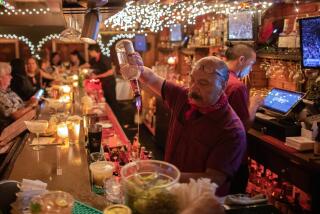AROUND HOME : Notes on Spanish Colonial Furniture, IBM Selectrics, Etched Glass and Goldfish : SHOPPING FOR ANTIQUES : Spanish Colonial Furniture
- Share via
ALL OVER SOUTHERN California, larders are stocked with ingredients found in the cuisine of the American Southwest--delicacies such as pinon nuts, ancho chilies, piki bread and tomatillo salsa. And there is no more colorful or authentic way to store these items than in a painted antique cupboard-- trastero-- from Taos, Santa Fe or Old Mexico.
Spanish Colonial furniture is handsome and decorative. Its simplicity works especially well in contemporary California interiors, and antiques and many reproductions are available in our area.
This distinctive style originated more than 400 years ago. From the time settlers followed conquistadors to the Southwest until Mexico’s independence from Spain in 1821, Mexican craftsmen made furniture for the Spanish. What they created was simple, mostly utilitarian carved-wood pieces. The furniture was appropriate to the area’s equally simple and utilitarian Spanish Colonial houses with their bare adobe walls and gleaming tile floors, a style dictated by the hot climate of Mexico and the Southwest. (Ostentation would be evident soon enough, when the upper classes began importing baroque furniture from Spain.)
The carpinteros , or native woodworkers of Mexico, made only the most basic pieces--chairs, refectory tables, benches and chests--as well as roperos (armoires used for storing clothes) and trasteros (free-standing storage cabinets for the kitchen). The trastero , in particular, is a piece of furniture that developed in Spanish Colonial America, with no counterpart in Spain.
After Mexico gained its independence, when Americans gradually took over the Southwest, regional furniture based on old Spanish Colonial models continued to be made, particularly by the Indian craftsmen of the Taos and Santa Fe pueblos. Simply carved, it was painted in bright colors. By the 1920s, a Spanish Colonial revival was under way. Anglo craftsmen continued the tradition.
For the collector, perhaps the most appealing aspect of Spanish Colonial furniture lies beyond its decorative effects. It clearly demonstrates the strength and harmony that can come from a design collaboration by different cultures.
Both antique and reproduction Spanish Colonial and Southwest furniture may be found at Umbrello and Bruce Eicher, both in West Los Angeles, and at Nonesuch Gallery and Hemisphere, both in Santa Monica.


